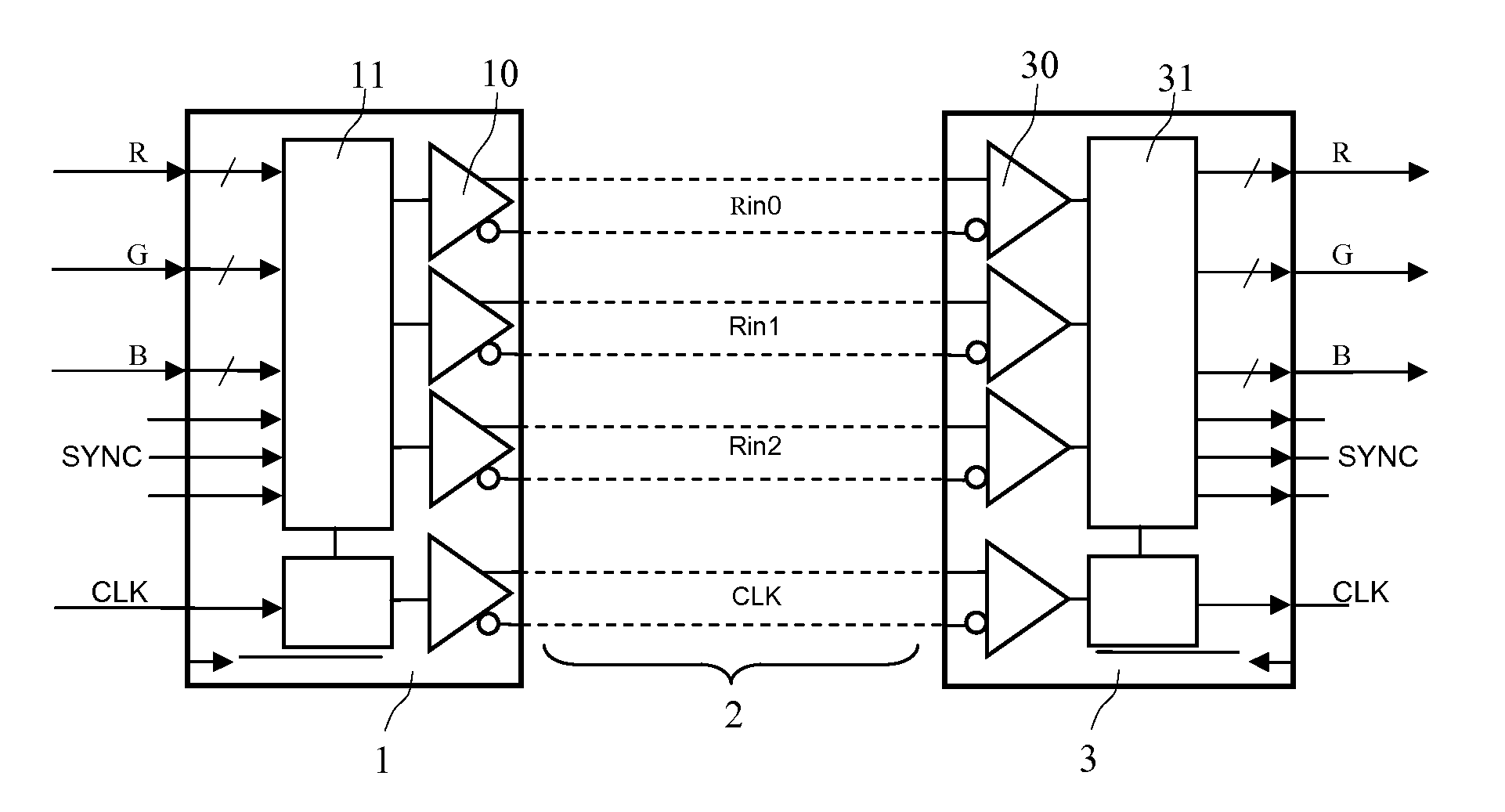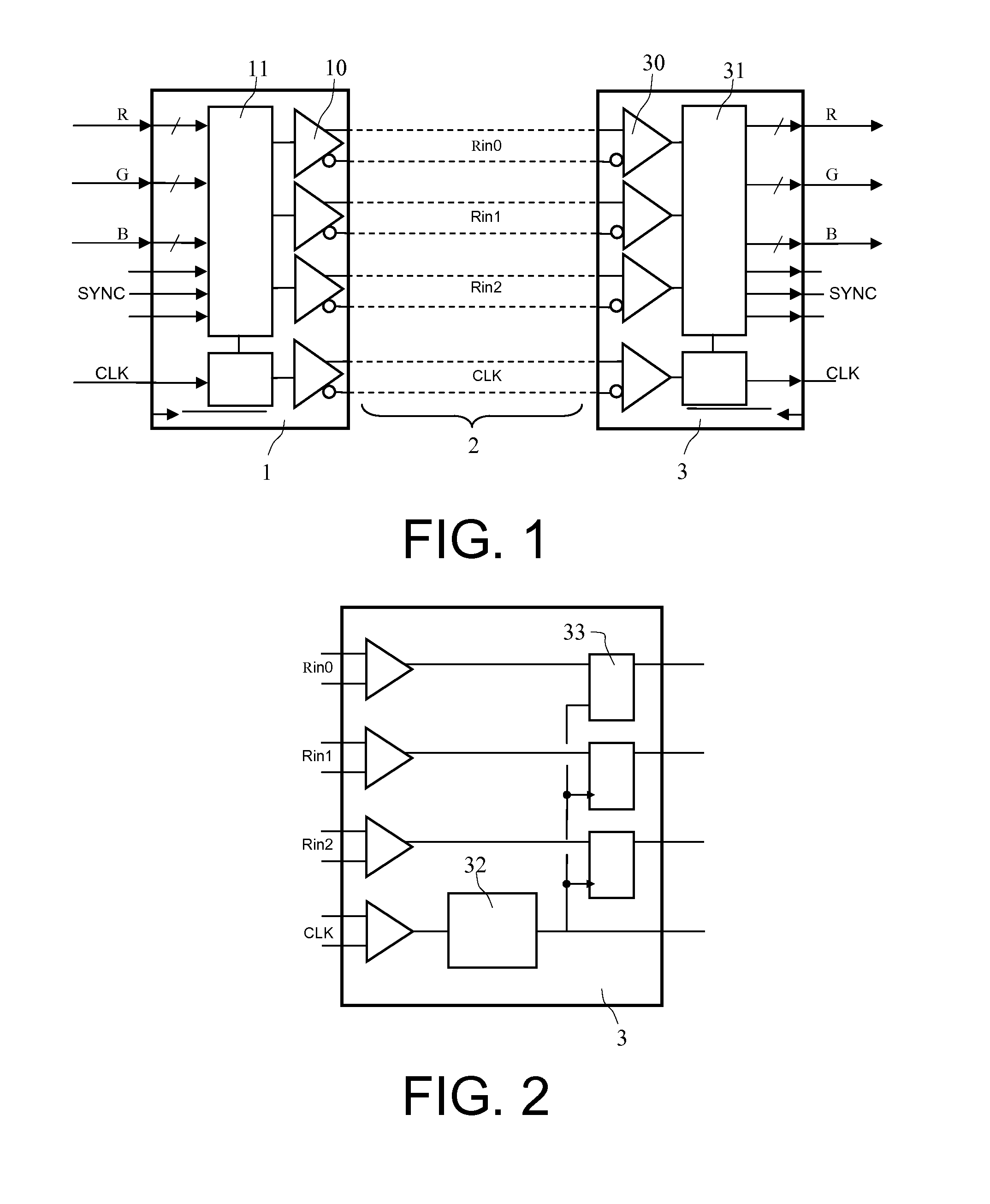System for Transmitting and Receiving Video Digital Signals for Links of the "LVDS" Type
a technology of video digital signals and transmission systems, applied in the field of digital links of the type lvds, can solve problems such as inability to improve a system, link is totally incompatible, and transmission errors can occur
- Summary
- Abstract
- Description
- Claims
- Application Information
AI Technical Summary
Benefits of technology
Problems solved by technology
Method used
Image
Examples
first embodiment
[0071]A first embodiment consists in carrying out a small tattooing operation on the image, an operation known as “watermarking” housed in a corner of the image, at the top left for example. The tattoo is of low intensity using the least significant bits or “LSB” of the pixels of the image. It is possible, for example, to use the colour bits G0 and B0. This tattoo is not visually perceptible because of its location and its low visual impact. But this type of function is not a priori easy to carry out with an application software programme in the case of an item of equipment based on a card for a microcomputer of the PC type.
second embodiment
[0072]A second embodiment consists in introducing a recognition graphic pattern of the “post-it” type. In this case, the graphic pattern must be superimposed on the image at any application executed by the transmitting equipment. This means that it is necessary to generate a “patch” of image that always replaces the original video image. The method making it possible to generate this pattern is similar to that of the small software program called a “post-it” having the “always on top” parameter enabled. In our application, the major difference compared with the “post-it” software program is that the location of this image fraction must be absolutely fixed and impossible to move. The height of the pattern may be only one line, preferably at the left on the top line of the screen.
[0073]The synchronization of the Rin1 and Rin0 channels is based on the recognition of this graphic pattern. Naturally the detection is validated in a time window relative to the synchronization information t...
PUM
 Login to View More
Login to View More Abstract
Description
Claims
Application Information
 Login to View More
Login to View More - R&D
- Intellectual Property
- Life Sciences
- Materials
- Tech Scout
- Unparalleled Data Quality
- Higher Quality Content
- 60% Fewer Hallucinations
Browse by: Latest US Patents, China's latest patents, Technical Efficacy Thesaurus, Application Domain, Technology Topic, Popular Technical Reports.
© 2025 PatSnap. All rights reserved.Legal|Privacy policy|Modern Slavery Act Transparency Statement|Sitemap|About US| Contact US: help@patsnap.com



